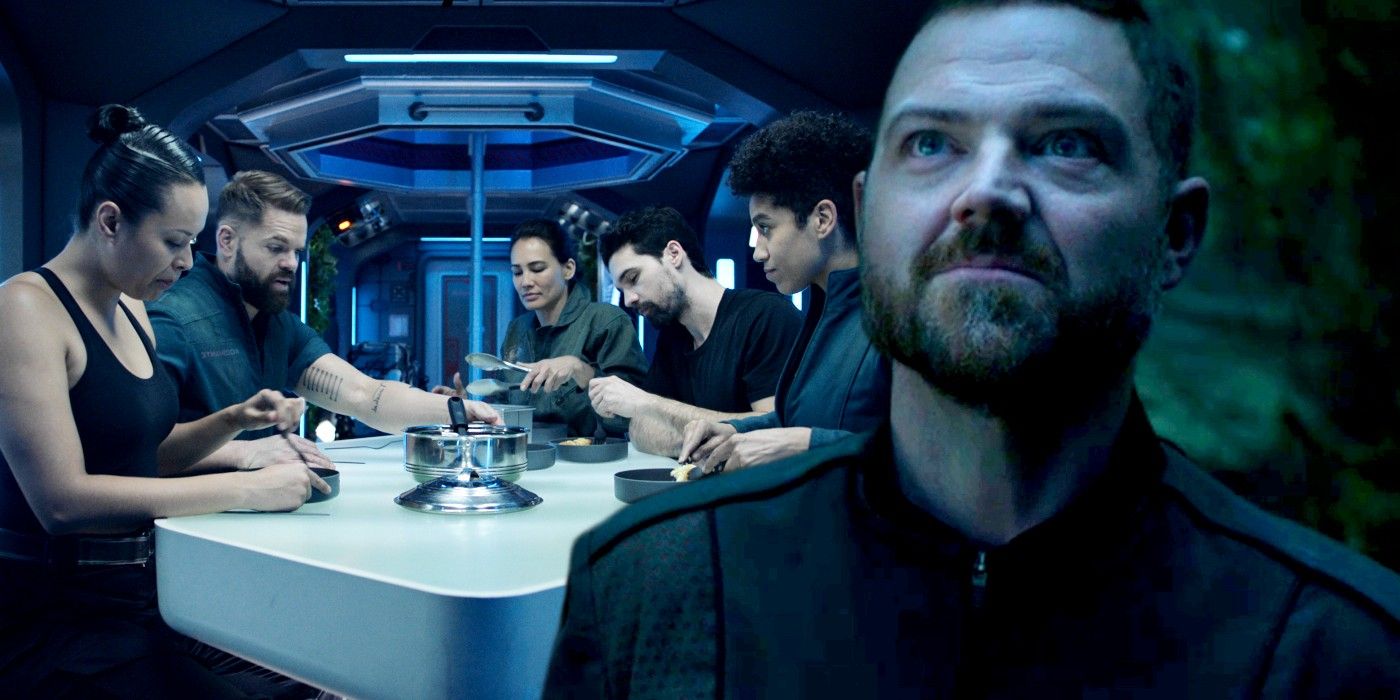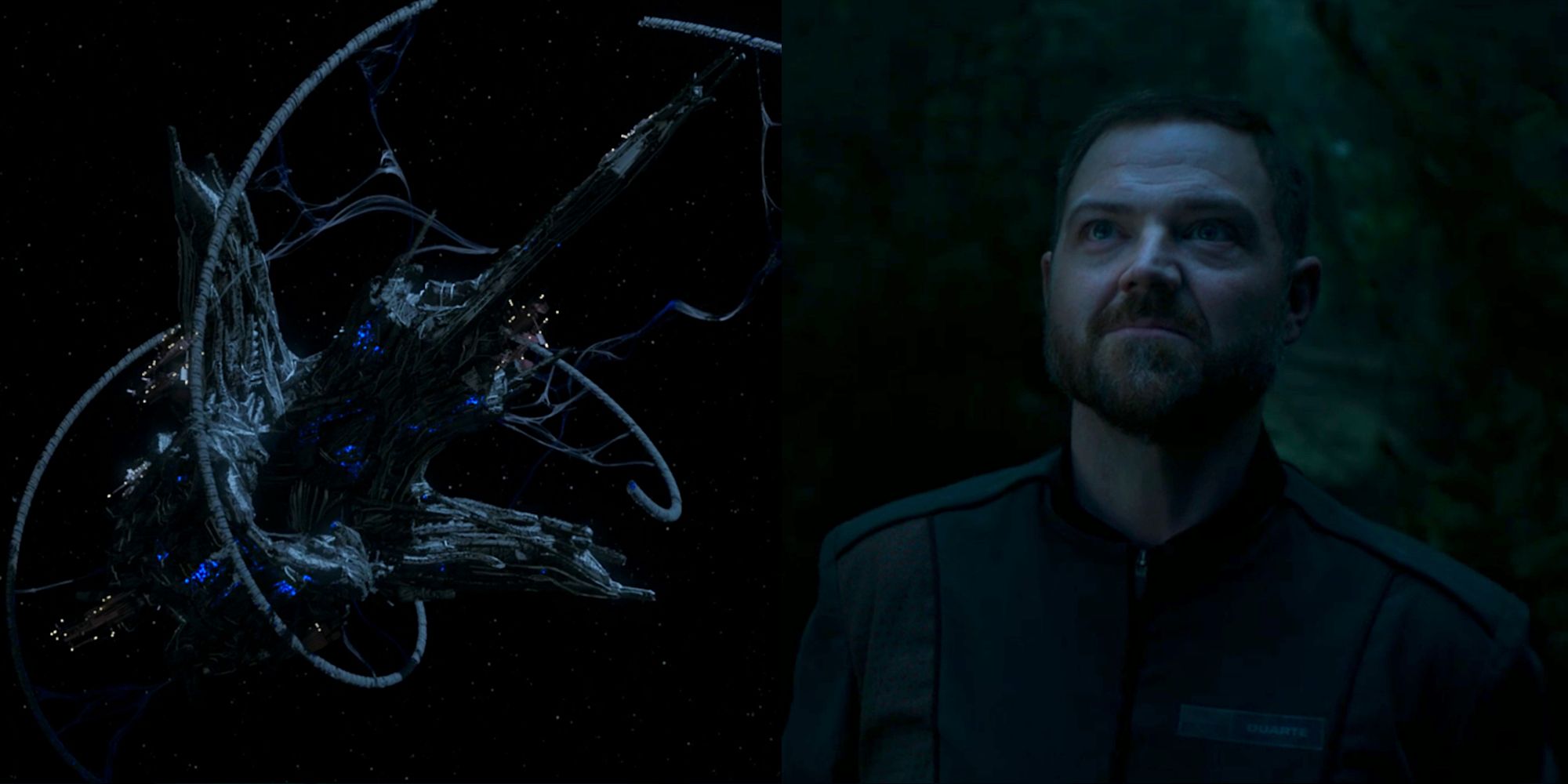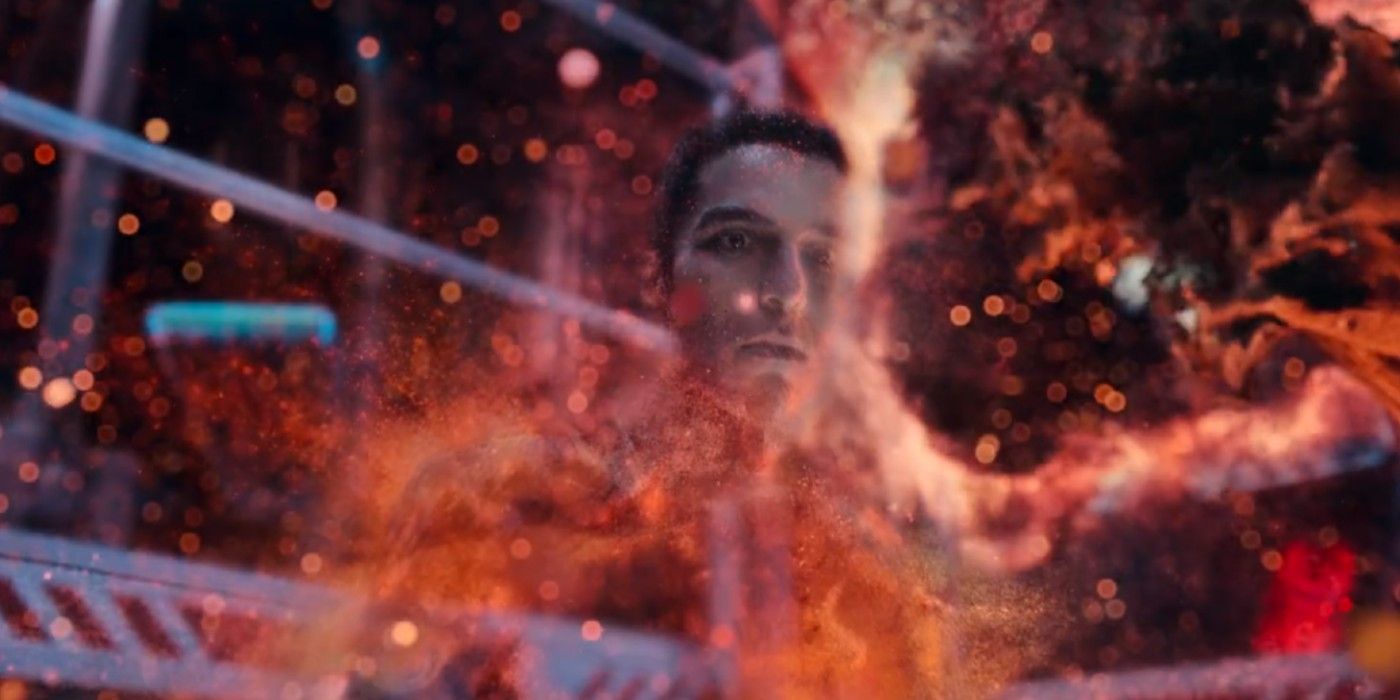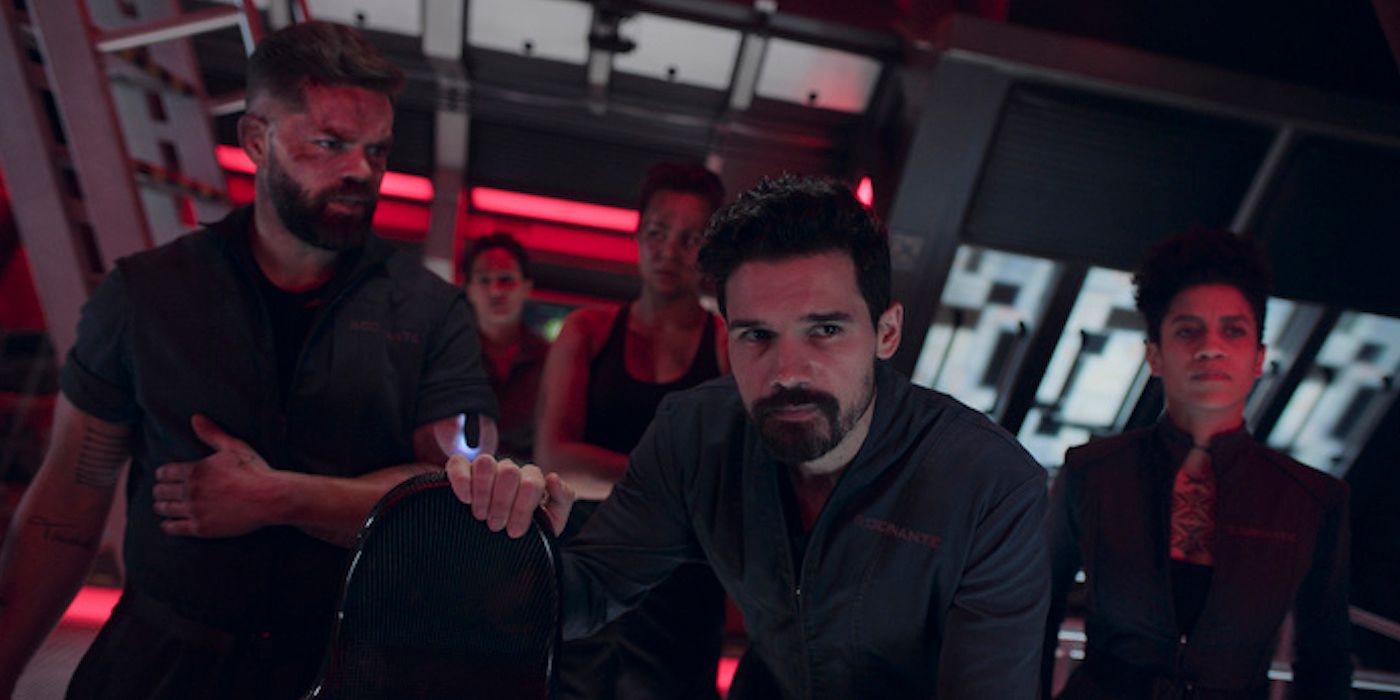Caution: spoilers ahead for The Expanse book series
The Expanse ends in definitively indefinite fashion - what becomes of the Rocinante and her crew, and how do the emerging threats of Laconia and the Ring entities develop in the narrative's future? Having nimbly dodged the railgun of TV cancellation once already, November 2020 brought confirmation that The Expanse season 6 would usher the Amazon sci-fi series toward an emotional conclusion... again. Those familiar with James S.A. Corey's original books quickly deduced that one last season wouldn't be enough to cover the remaining 4 novels (Babylon's Ashes-Leviathan Falls), and wondered how The Expanse's live-action adaptation would handle this early leap from Amazon's airlock.
Mercifully, The Expanse's final season makes no attempt to cram 4 books into 6 episodes, sticking largely to material from Babylon's Ashes. As a result, the series finale has been well-received by fans and critics. Alas, the cost of The Expanse's strong finale is leaving a fair few facets still unfinished by the closing credits. Some questions are open-ended and left up to audience interpretation, such as, "What does the Rocinante crew do next?" Other mysteries lean into The Expanse's book mythology, and would pay off clues the TV show kept dropping right until the bitter end, such as "Is Winston Duarte's massive Protomolecule warship going to be a problem?" Yes... Yes it is.
The Expanse hasn't yet confirmed how (or, indeed, if) those plot threads are going to be picked up in a future continuation. For viewers eager to find out whether James Holden's ominous warnings about the Ring entities ring true, however, here's a breakdown of all the key developments in The Expanse's future.
The Expanse Continues After A 30-Year Time Skip
The looming 30-year time skip between Babylon's Ashes and Persepolis Rising always presented The Expanse's TV adaptation with a unique challenge, although showrunners insisted they had ideas on how to handle the timeline's impending shift (via EW). Nevertheless, the difficulty executing such a long time skip on TV may have contributed toward making The Expanse coming to a halt right before the time skip begins.
What happens during The Expanse's book time jump? Despite bickering constantly and facing certain death on a daily basis, the Rocinante crew miraculously stay together during The Expanse's undocumented 30 years. The Roci goes freelance, mainly taking jobs pertaining to Ring Gate transit. Steven Strait's Holden sets up a similar future for his live-action crew, telling Naomi how they could make money fighting pirates or "get a consulting gig on one of the colonies." We can assume, therefore, that the Roci polices the Ring, continuing to cooperate with Drummer's Transport Union as Sol enjoys the fragile peace achieved in The Expanse season 6's finale.
Elsewhere, trouble is brewing. The Expanse's final season placed heavy emphasis upon Laconia - the colony Sauveterre's Martian rebels fled to in season 5 - and introduced Dylan Taylor as Admiral Winston Duarte, the brains of Laconia's operation. The Expanse season 6's Laconia scenes likely take place during the books' time jump. As evidence of this, we see Santiago Singh among Xan's friends. A young boy during his live-action appearance, Singh is a grown man with a wife and daughter by the time Persepolis Rising begins. In James S.A. Corey's books, Laconian scientists use Fred Johnson's stolen Protomolecule sample to create a small fleet of alien warships, and this is foreshadowed in the TV series. Duarte also imbues himself with Protomolecule powers by studying resurrected young siblings Cara and Xan. Their capture is also alluded to in The Expanse's final episode - when their father calls the military to find them.
Should The Expanse ever pick up where it left off, there are two ways the time skip can be handled. Either Steven Strait, Dominique Tipper and Wes Chatham are replaced with older actors (a risky strategy given how intrinsic that trio has become to The Expanse's live-action success), or the TV time skip is sliced from 30 years to 10-15. This would still convey the passage of time effectively enough, and The Expanse could get away with reuniting the original cast (perhaps wearing a bit of makeup). Reducing the time jump isn't without its drawbacks though. Is a single decade enough time for an evil military warlord to realistically build an empire-worthy force from scratch?
Duarte's Laconian Empire Invades The Sol System
The Expanse's final season strongly positions Dylan Taylor's Winston Duarte as the major villain for a (currently) non-existent season 7. Duarte's conversation with Cara establishes the Admiral's deluded dictator complex, while his final shot - a longing look up at Laconia's glowing blue warship station - could hardly feel more ominous. Holden also expresses lingering concern over the stolen Protomolecule sample that's still unaccounted for. Undoubtedly, then, The Expanse sets up Duarte's Laconian Empire to inherit Marco Inaros' job of terrorizing the Sol system.
These teases pay off in The Expanse's later books, beginning with Persepolis Rising. Constructing a trio of massive warships using the leftover technology hanging over Laconia's skyline, Duarte's soldiers come back through the Ring Gate 30 years after leaving the Sol system, effortlessly seizing control of Medina Station and mankind's colonies. The Rocinante crew members help lead a resistance to get as many Belters as possible away from Medina and its Duarte-appointed chief, Santiago Singh. Meanwhile, the Laconian flagship (Heart of the Tempest) makes its way across the Sol system toward Earth and Mars, dominating Belt stations as it progresses. Had The Expanse season 7 happened, these dual storylines likely would've dominated the narrative.
Tiamat's Wrath jumps ahead another four years, with Duarte's Laconian Empire now in full control of the Sol system and its colonies. With Holden taken prisoner by Duarte, Bobbie and Alex piloting the Gathering Storm stolen from Laconia, and Naomi continuing to whip up resistance against the Imperial regime, the disassembled Rocinante crew more or less succeed in ending Laconia's grip on the colonized galaxy. These events would've surely given The Expanse season 8 its foundation.
The Ring Entities Begin Attacking Humanity
Of course, Laconia isn't the only enemy The Expanse teased in its final season. The mysterious Ring entities, who wiped out the Protomolecule builders many millennia ago, have been growing angrier since the Ring Gates came back to life. James Holden and Elvi Okoye feel this powerful alien force becoming increasingly aware of humanity, and The Expanse season 6 foreshadows their future emergence in its closing credits, with the familiar red bubbling effect infecting the usually-placid Ring Gate image that accompanies cast and crew names. The Transport Union was founded to limit Ring transits and ensure the mass energy threshold required to awaken the Dark Gods isn't met but, let's be honest, that was never likely to keep the extra-universal villains quiet forever.
In Persepolis Rising (The Expanse season 7), the Ring entities respond to the Heart of the Tempest's Protomolecule-made weaponry being used against Sol by making every living person in the system simultaneously lose consciousness. Afterwards, an artifact identical to the one on Ilus is found aboard the Laconian ship. This would've been The Expanse's next escalation after the Ring entities destroyed Marco Inaros, with attacking humanity directly representing a huge leap in aggression. And the Dark Gods get even darker in Tiamat's Wrath - a.k.a. The Expanse season 8. In his foolish attempt to wage war against an unknown enemy, Duarte sends an antimatter bomb through the Tecoma Gate, intentionally triggering a Ring entity appearance. It's a bold strategy, Cotton, and it does not pay off. The Ring entities respond by destroying the Tecoma system, then attacking the entire Slow Zone with their dark tendrils, destroying Medina Station and everything within - yet another escalation of violence (albeit one they were provoked into).
The battle between humanity and the Ring entities comes to a head in The Expanse's final offering, Leviathan Falls. Duarte, now separated from the Laconian Empire and consumed by his Protomolecule evolution, believes the only way to save humanity is bringing everyone under his hive mind from within the Ring station. The Ring entities react badly to this news, causing James Holden to characteristically take matters into his own hands, becoming one with the Protomolecule and shutting down the Ring Gates completely, thereby ending the Dark Gods' ability to enter our universe.
What Happens To The Expanse's Rocinante Crew (& Humanity)?
As The Expanse's TV adaptation comes to an end, it's pretty much a "happily ever after" for the Rocinante crew. Holden, Naomi and Amos are officially joined by Bobbie Draper and Clarissa "Peaches" Mao... but that's not where the gang's book stories wrap up. Preventing the Dark Gods' destruction of humanity requires James Holden to make the noble sacrifice he was always destined for, while Naomi successfully escapes, leaving her love behind.
Sadly, two major TV characters don't even make it to The Expanse's final chapter. Bobbie Draper sacrifices herself to take down the Heart of the Tempest during Tiamat's Wrath, dealing a crippling blow to the Laconian Empire. Although Frankie Adams' character gets a much happier conclusion (replacing Alex as the Rocinante's new pilot), it's no stretch whatsoever to imagine the live-action Martian making a similarly noble gambit. Peaches wilts even earlier in The Expanse's timeline, making a sacrifice of her own so her friends safely escape the Laconia-occupied Medina station. Unlike Bobbie Draper, this storyline is seemingly ruled out by Peaches' TV ending, where a medical diagnosis confirms she only have 5 years to live. She won't see through the time-skip by a long shot.
By a comfortable distance, however, it's Amos Burton who gets The Expanse's most fascinating ending. After the Laconian Empire takes root within the Sol galaxy during Persepolis Rising, Amos undertakes a secret mission infiltrating the Imperial epicenter, befriending Admiral Duarte's daughter under his true name, "Timothy." Amos is killed for his troubles, but dying on Laconia is like getting a cold, and the planet's strange dogs bring the Roci mechanic back, effectively making him immortal.
Rather than ending with the formation of the Transport Union and two major threats rumbling in the distance, The Expanse's true resolution comes 1000 years later. One of the human colonies beyond the Ring Gate, cut off from its home, has successfully developed faster-than-light space travel without relying on Rings or the Slow Zone. They arrive on Earth to see the planet their ancestors called home, and find Amos Burton as one of the last Earthlings still standing.





